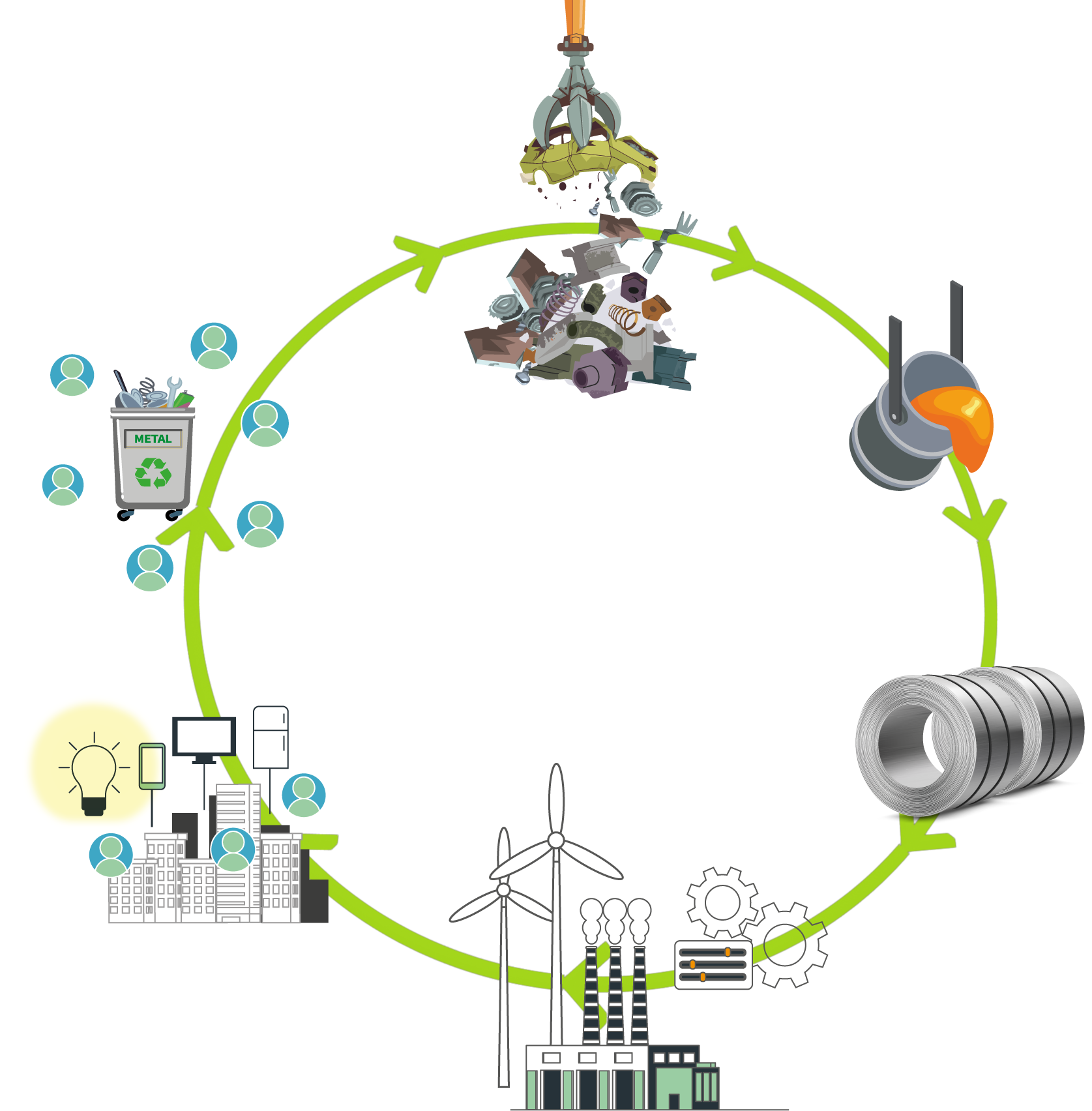Circular economy
Pdf download
Circular economy is a model of production and consumption that moves away from the concept of disposable objects. Instead of extracting, manufacturing, consuming and discarding, this approach proposes a closed cycle where materials are kept in use for as long as possible, reducing the need for new resources and minimising waste generation. It is about optimising each stage of the product life cycle, from the design to the eventual recycling, with the aim of maximising value and reducing environmental impact.

The use of stainless steel fits perfectly with the principles of circular economy. Unlike other materials, which require constant replacement or intensive maintenance, it requires almost no maintenance interventions, which reduces the consumption of additional resources. Stainless steel is highly durable, corrosion and wear resistant. Its service life easily exceeds 100 years.
However, the real contribution of stainless steel to circular economy goes beyond its durability. When a project or installation reaches the end of its life cycle, this material can be recycled without losing its essential properties. In fact, stainless steel is composed, in European averages, of more than 80% recycled materials, which means that the cycle can be indefinitely renewed. Each time it is reused, the extraction of raw materials is avoided and the energy required to produce more stainless steel is reduced.
In addition to extending the useful life of facilities, it is re-integrated into the production cycle once its use is complete. It is a clear example of how circular economy is applied in practice, making materials renew their life cycle and contribute to a more sustainable future.
Find out more in our 94 magazine article → “Towards circular economy”.